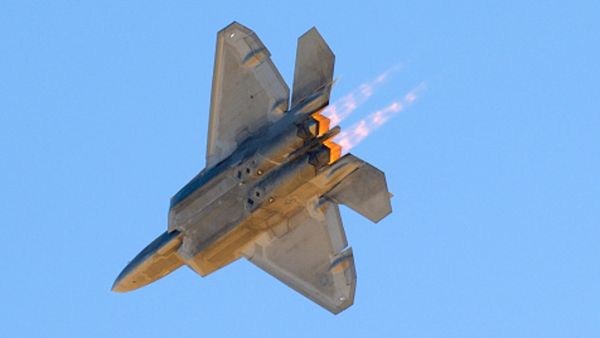

Afterburners are used on modern day fighter jets to help give them enough thrust to takeoff , specifically on an aircraft carrier, as well as to fly faster than the speed of sound when they need to get somewhere quick. When the pilot engages the afterburner, it creates a reaction that erupts enough force to propel the jet forward. The fuel (usually kerosene) enters the engine through hundreds of tiny holes and is combined with the air already being sucked in. A device that creates an electric spark ignites the fuel, forcing it to expand the oxygen in the air stream. The heat generated from the air and fuel shoots out of the exhaust, creating the pilot’s desired thrust.
The engine is designed in such a way that the flames from the exploding fuel don’t touch its walls, otherwise it could burn through and damage it. 3,000 degrees Fahrenheit has no problem tearing through most materials. Luckily, the air is colder at higher altitudes, which adds a layer of protection.
When the afterburner isn’t engaged and the jet is flying at cruising speed, the engine acts as a typical turbojet. It might add an extra 50% of thrust, but pilots have to use the afterburner sparingly or risk running out of fuel too fast.
Contact to : xlf550402@gmail.com
Copyright © boyuanhulian 2020 - 2023. All Right Reserved.